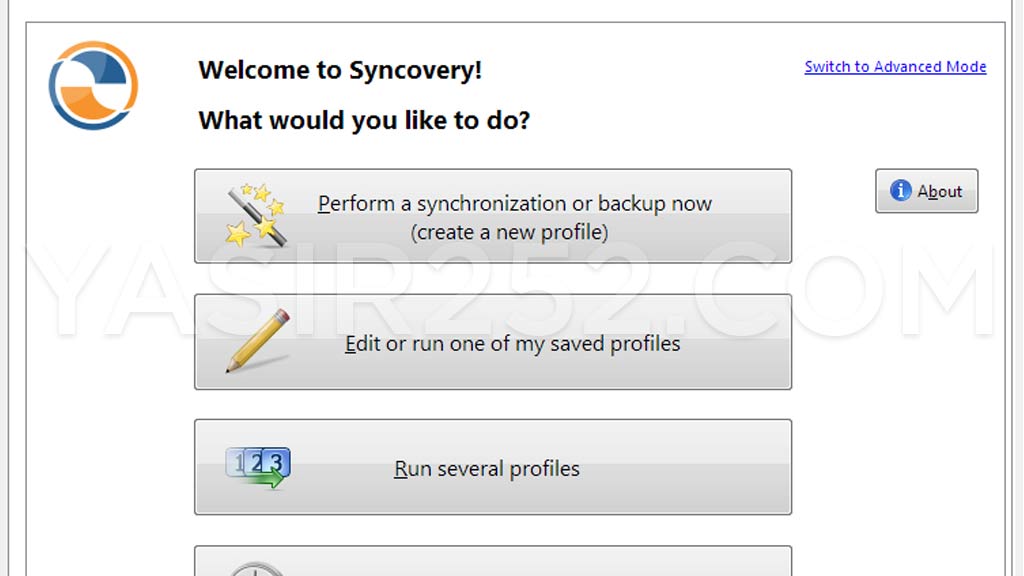

#COPY SYNCOVERY INI FILE DOWNLOAD#
Depending on your plans, it could be well worth spending a little time learning more about. Syncovery Download our free Virus Removal Tool - Find and remove threats your antivirus missed Summary Recovery Instructions: Your options In the Application Control policy, applications are allowed by default. Create local file syncovery.ini with content SkipProfileListAuth1 Login to Syncovery instance. Because of latest changes related to encryption it has to be added a following way.
#COPY SYNCOVERY INI FILE FULL#
It specifies a full path to both the source and destination.Īs you can imagine, the Command Prompt, while somewhat arcane for the average user, is incredibly powerful. Setup Syncovery Exporter using endpoint /profile.json which is available after adding SkipProfileListAuth1 to Syncovery config file. This example performed the same copy-and-rename we did earlier, but doesn’t rely on any assumptions about the current directory. Now your COPY operations will be relative to the new current directory.Īlternatively the COPY command will work with full paths as well, eliminating any reliance on the current directory: How can I ensure I get all of the list building and copy/move data in the log for. ini files that are generated each time you create a folder in Windows. I found a reference to the AbsMaxMemory setting in the the INI file.

This field is only shown in the edition/creation wizard and allows you to. ini file operation, as it appears in the Ini File Operations list. ini file via Notepad (change the file type from. Enter details in the New Ini Files Operation dialog tabs, then click OK.

#COPY SYNCOVERY INI FILE .EXE#
exe or shortcut, select the 'Run As Administrator' option, open your. You can change directories with the “CD” command: CopyFolders copies all new or modified files from one or more origin folders to. Answer Linney Replied on MaTry launching Notepad via a right-click on the. These examples all assumed that the file you want to copy is in the “current directory” (or current folder), as listed in the command prompt itself. In other words we copied the file, and gave the copy a new name in one operation. This time we copied “C:\Documents and Settings\LeoN\current.txt” to “C:\Documents and Settings\LeoN\My Documents\ copy.txt“. The “trick” here, if you want to call it that, is that the destination can either be the folder to receive the file, or it can include the new filename.Įxecuted with “C:\Documents and Settings\LeoN” as the current directory, copied “C:\Documents and Settings\LeoN\current.txt” to “C:\Documents and Settings\LeoN\My Documents\current.txt”. The COPY command has the following syntax: Start by firing up a command prompt – usually Start, All Programs, Accessories, Command Prompt. However, using the COPY command in the Windows Command Prompt, you can do it in one quick step. In Windows Explorer, when you drag and drop a file from one location to another, you must let the copy (or move) operation complete before you can then rename the file in its new location. to specify the column separator for actions log CSV files with Syncovery.ini. By hiding them, they will not be selected when you ‘Select All’ and ‘Copy.’. dmg file, here we go some fact about Syncovery. However it’s a snap using the Windows Command Prompt. Hide the Thumbs.db files so they are not selected when transferring the contents of a folder.


 0 kommentar(er)
0 kommentar(er)
